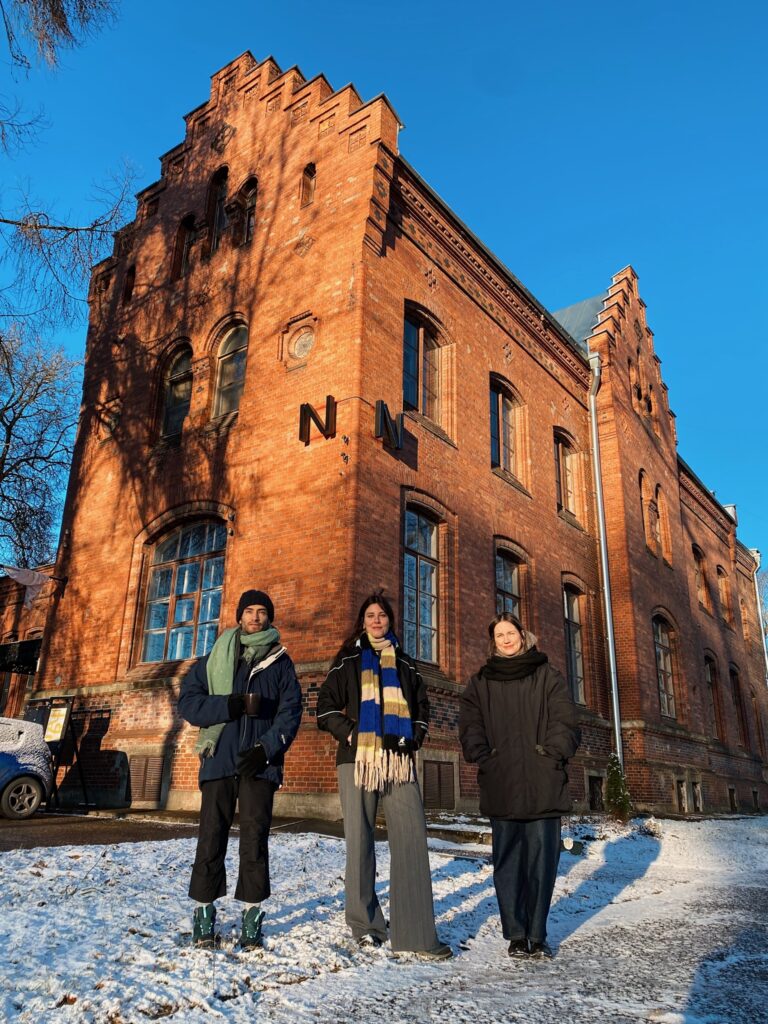Our story begins at the end of XIX century, when Kreenholm Manufacture introduces a new position of technical director. A new villa was erected as service housing for for him and his family. On old maps, this building is signed just with number «43», at that time industrial settlements got another system which differed from street numbering — each object or a land area from barn to factory building got its own number. Also, it is important to mention for not mixing it up that there are two director’s houses. Near the bridge to Kreenholm island you can see a wooden villa of the manager (or director) which is very unusual for an industrial area, such type of architecture can be found at Narva-Jõesuu resort. By the way, there also was also a monument for the manufactury’s founder, Ludwig Knoop, which is not there anymore.
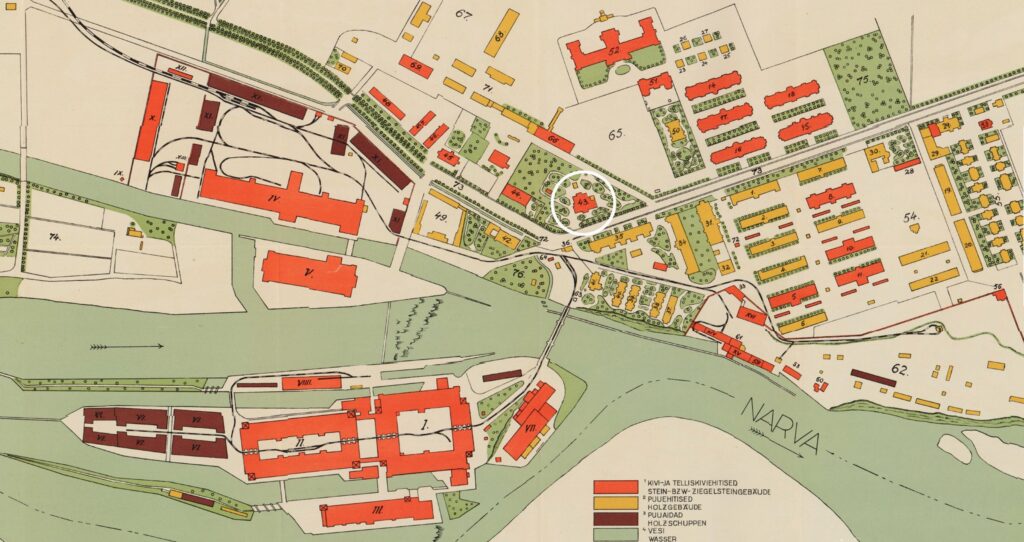
Kreenholm manufactury was a large-scale enterprise with its own architect. Three different architects took this position: Roman Heinrichsen (who built most of the wooden houses and first factory buildings), Paul Alisch (who built most of the stone houses) and Aleksandr Vladovski (hospital and worker’s club). The director’s villa at Joala 18 was built by Paul Alisch just like the the other red brick houses in a Gothic Revival style which was very popular in England at that time. Gothic Revival draws upon features of medieval examples, including decorative patterns, finials, lancet windows, and hood moulds. the director’s villa was partly damaged during World War II — the roof and roof span were burnt but in general the house has been preserved. At Soviet time an extension was added and the house lost its symmetry.
As we mentioned before it was a service housing for the director and his family. Marjorie Cottam, daughter-in-law of the last technical director, described the house this way: “A square building with large rooms. The house had three living rooms, a kitchen, three bedrooms, a cloakroom and a bathroom The attic was used for drying clothes, for storing wine and as winter storage. Outside, there was a garden and an icehouse where provisions were stored during the summer months. Residents were served by a cook and a maid.” We also know that this splendid garden with an alpine slide was surrounded with a fence that was hiding the life of the director’s family from prying eyes.
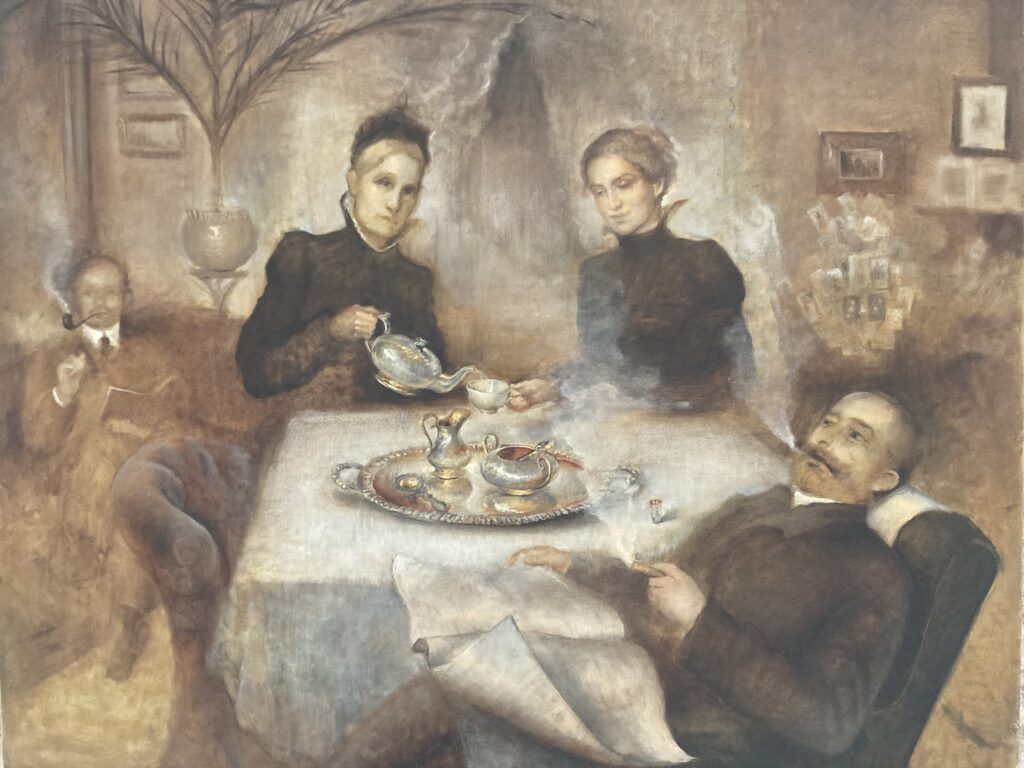
After the revolution in Russia and continuing World War I, the building at Joala 18 was no longer a director’s house. During the German occupation in 1918 it housed officers and then a Red Guard’s headquarters during the Commune of the Working People of Estonia time (not so long ago there was a Soviet sign commemorating that period on the façade). At the end of 1918, the Joala battle occurred on the Kreenholm fields, which was the first one of the Estonian War of Independence. Already by February 1919, Red troops had left Narva. From that time onwards, Estonian military forces started renting the director’s house from Kreenholm Manufactury and they stayed there until 1932.
From the start of the Estonian War of Independence, the former director’s villa housed military forces. First, there was the office of the 1st Estonian military division, and then from 1925, the division’s headquarters moved in. Estonian newspaper Põhja Kodu was quite often spotlighting the life of 1st division: reports from the parades, receiving foreign guests, publishing books, football matches and bicycle marathon competitions between divisions (they even mentioned a new fence being built around the building!). Everything changed when Estonia signed the non-aggression treaty with the USSR in 1932. After that, the military headquarters left the border city of Narva to Rakvere. Põhja Kodu wrote about how the local people were saying their farewell to the soldiers who headed to the train station. We don’t know what was at the house after that. The building was still the property of the manufactury, but was it in use? For example, the nearby building of the hospital was empty up to the end of 30s when the city government bought it.
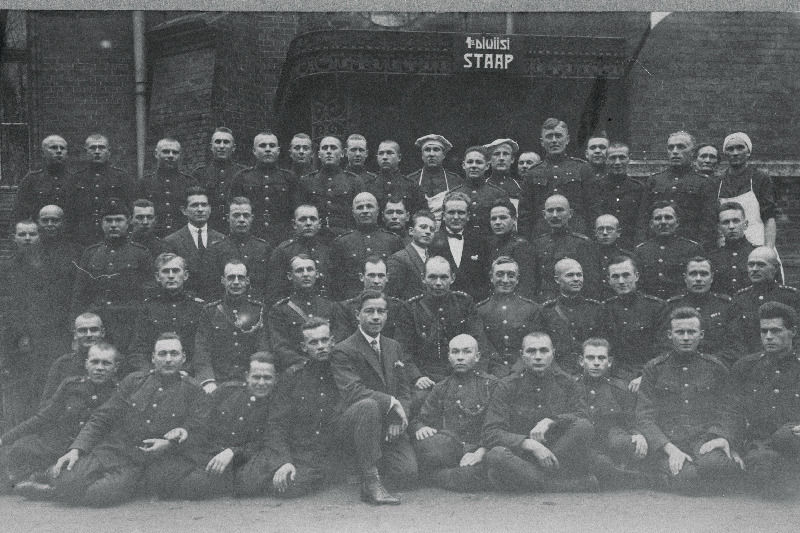
In 1940 the Soviet Union occupied Estonia and from that moment started the process of sovietisation. In July of 1940 Kreenholm manufactury was nationalised as all the other banks, big industrial enterprises, etc. All employees were prohibited to leave the work, otherwise they would be strictly punished for sabotage. In 1941 Narva was occupied by Germans. All ex-workers were offered to come back to their workplaces. We don’t know much about the director’s house at that exact period of time. According to new information from the newspapers, there were study classes for a local school. Another notable thing happened — during the German occupation at Kreenholm manufacture there were festive events for workers and the manufacture’s manager, baron Andreas Knoop, Ludwig Knoop’s son was also present. In 1944, during the offensive operation, Red Army troops captured Narva. Kreenholm workers’ settlement was very damaged, but in general, compared to Narva’s centre and nearby areas, was not completely erased by war. Wooden barracks were completely destroyed, but stone buildings were still there. As we can see on the photo the roof of the director’s house was burnt, roof overlap constructions were destroyed as were all windows.
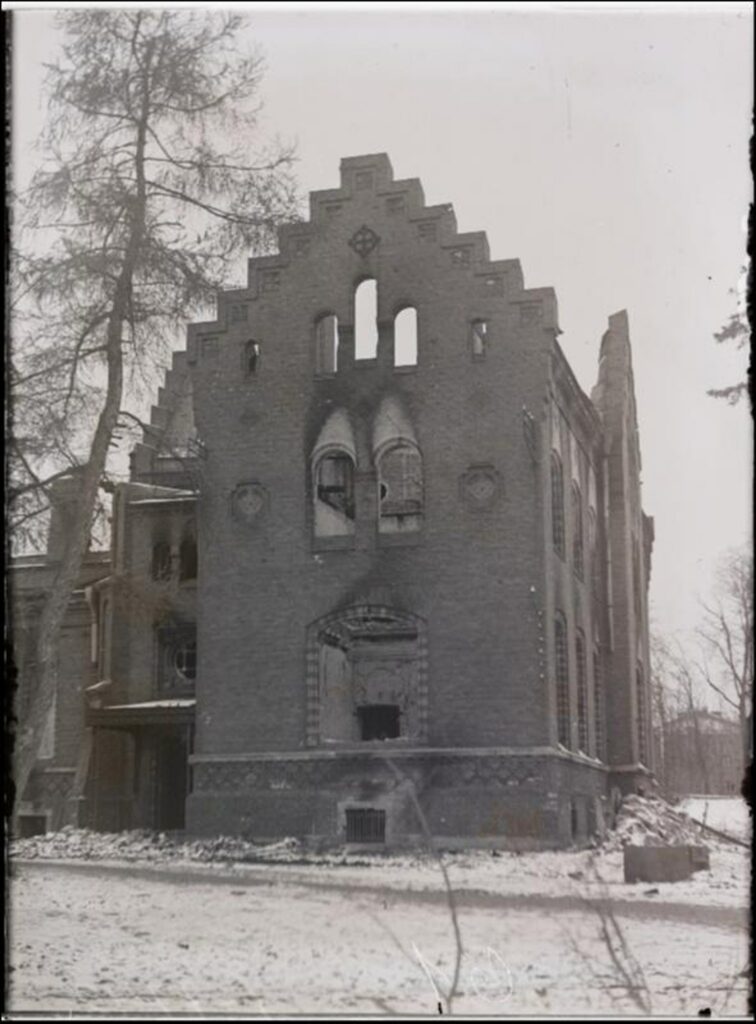
Along with the reconstruction of the manufacture the population was growing too and Kreenholm worker’s club was not big enough to host all visitors. Those big queues for cinema tickets were even highlighted in a TV report. For the manufacture’s 100 years anniversary workers club moved to a brand new erected building which was named after workers’ revolutionary leader Vasily Gerasimov. After the worker’s club in the director’s house, there was a House of Children’s Art of Amalie Kreisberg (also well-known revolutionary) with many activities like chess club, dancing, culinary, film directing, photographing, weaving, carpeting and sport club. Also, there was a puppet theatre. Even nowadays Narva locals still call the house at Joala 18 as “Amalie”.
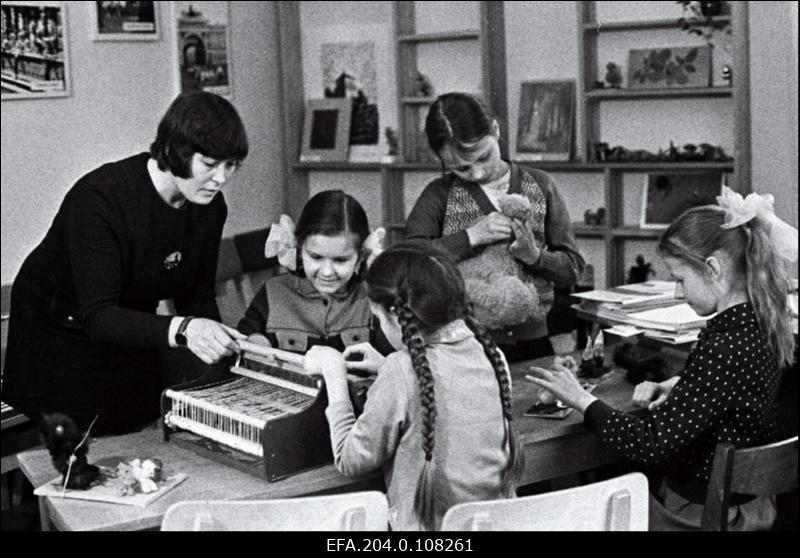
After restoration of independence, Kreenholm manufacture was privatised. Swedish company Boras Wafveri AB was the main shareholder. During the Soviet time Kreenholm library was financed by manufacture, but because of lack of the budget there was a cut off of book collection and library’s staff. Before there were 11 employees and after only 5 left and book volume was reduced from 130 000 to 102 000. Library moved back from Geras’ka to the director’s villa. Also there was a rehabilitation centre. In 1994, the library was taken over by the municipality. In 1999, there were already 3119 registered readers who could use the 26-seat reading room in the former director’s house. Many employees and visitors recall that the building on Joala Street was cramped and cold in the winter. The historic house was poorly suited to the needs of the book collection and so the library moved from the director’s house to a new building.
The children’s library closed in 2007 and since then it was empty until the agreement of founding an art residency. It happened in 2005 between Estonian Art Academy (EKA) and Narva Gate company, the owners of the manufactury. Art residency’s mission is to revitalize the cultural life in a quiet Kreenholm neighbourhood which faded after manufactory’s bankruptcy. Narva Art Residency hosts artists from all over the world. They live here and create their projects, implement ideas that also involve local people. Every year there is an open call, so every artist gets an opportunity to apply for a residency. Also, NART is an open platform where art exhibitions, workshops, public events, discussions and history tours happen weekly.
